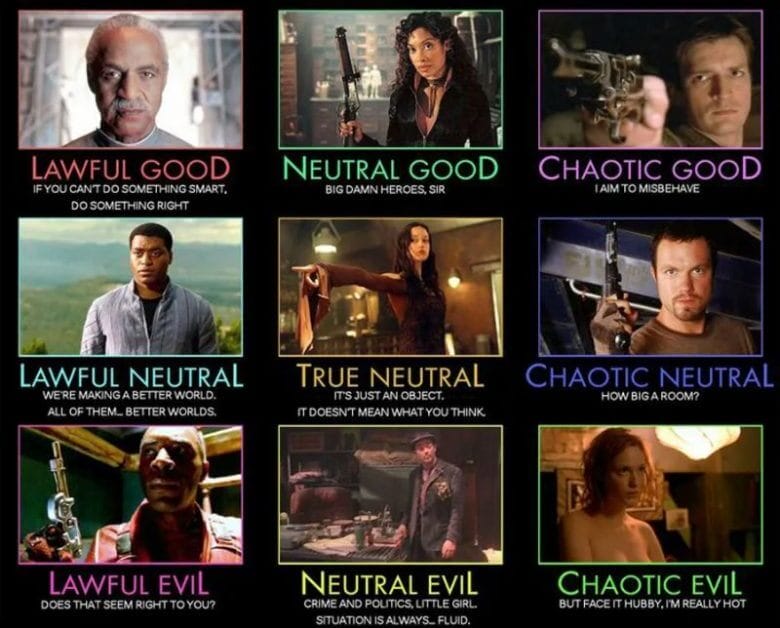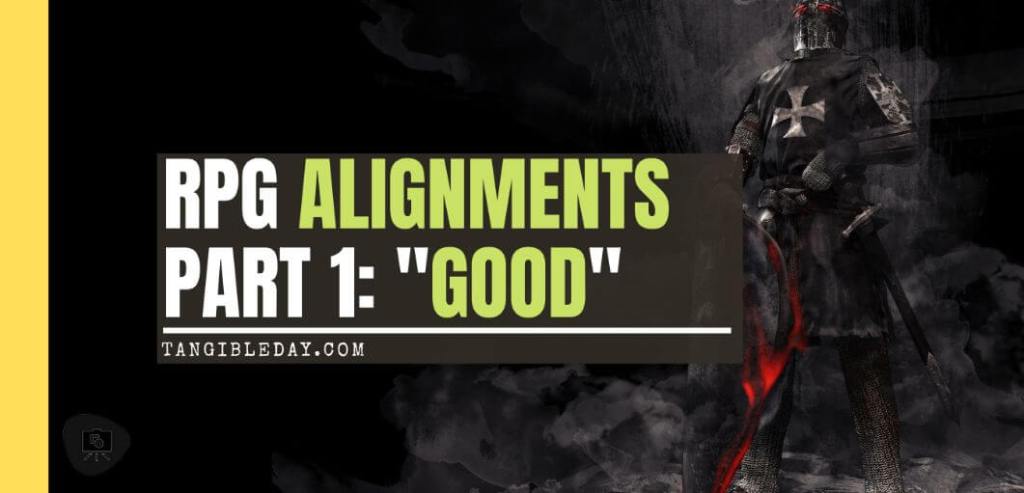The purpose of this article series is to offer a thoughtful perspective about what it means to be Lawful, Chaotic, Good, Neutral and Evil. As a GM I find myself creating a lot of NPCs and helping guide character creation for my players. Acting according to your Alignment can be one of those optional rules that can cause frustration at the table. This series will help you better understand how each alignment type thinks and act in order to make playing them more fun for everyone involved including yourself as the player.
In this article, Jared Emanuel, guides you how to approach each alignment in building your RPG character. This is part 1 (of a 3 part series), where Jared discusses his thoughts about what it means to be “Good” in tabletop roleplaying games like Dungeons and Dragons (DnD), or Pathfinder.
Check out Jared’s RPG Alignment Guide Part 2 (The Neutral) and Part 3 (The Evil).
MORE: BEST CUSTOM DICE TRAYS FOR TABLETOP GAMING
Introduction: I’m a Lawful Good, I Swear!
As a GM I find myself creating a lot of NPCs and helping guide character creation for my players. Acting according to your in-game Alignment can be one of those optional rules that can cause frustration at the table. Remember, just because a player chooses one Alignment at the beginning of the campaign, does not mean that a character must stay in that zone. A player and a Game Master should feel comfortable talking about character growth.

This series will help you better understand how each alignment type thinks and act in order to make playing them more fun for everyone involved including yourself as the player. If your favorite Alignment is not covered here, please understand that this 3-part series will cover it later on.
My intention here is to take a step back from the rules of D&D and look at the concepts of what Alignment means and how we, as players and Game Masters, can use that to enhance our games.
To begin this series I would like to talk about ‘Good’ characters in D&D. This article is more about the philosophy behind Good than it is about being a good person in real life. In fact, I think the two are very different….
So, what makes a character good? Let’s get started!
The Struggle is Real
Performing good deeds should be the goal of a character with Good Alignment. Upholding justice, defending the truth, spreading joy, and supporting the community are several ideals (but not all ideals) that a Good character should find appealing. Chaos, Neutrality and Law act as tool kits to achieve the goal of Being Good. Each type of Good character should frame their struggle against Evil with their own personal struggle.
For mechanical purposes, if a character has powers that come from a specific deity, do not take away those powers away the moment they begin to journey away from their Alignment. That is a fast way to upset the table. Plan ahead and make creative adjustments appropriately.
The Struggle of the Lawful Good Hero: Justice Vs. Tyranny
Lawful good does not mean lawful stupid. A Lawful Good Hero should not feel compelled to follow every law in writing. The character must ask himself this: Does this law promote justice or tyranny? Upholding justice and defeating tyranny should be two of the considerations when a Lawful Good character makes a decision.
A good definition of law that promotes justice is a law that defends the rights of a person’s health, freedom, or happiness. A law that is tyrannical will restrict a person’s aforementioned rights. If a lawful good character encounters a law that does not promote the ideals of truth, fairness, freedom, and health then they should question the value of that law.
“Lawfulness is honorably doing what’s right no matter who it hurts….”
-Anonymous interpretation of a New York Times article
A lawful good character will naturally grow when they begin to question the values of the society. If they believe in a higher morality that supports justice they will feel more courageous when they fight tyrannical laws. This could lead them down a path of non-violence or the path of a or a jaded freedom fighter thereby making an easy transition into a different Good Alignment or into the Neutral Zone.
The Struggle of the Neutral Good Hero: Peace Vs. Violence
The struggle of Neutral Good Hero is Peace vs. Violence. A Neutral Good character is not the sort of person that will purposefully kick over a hornets nest because it is near the playground. If the hornets are at peace, why provoke a confrontation?
A neutral good character should consider acting second, to act as a defense against any aggressive foe that the party might encounter. A Neutral Good Character would want to promote harmony and oppose behaviors that promote factionalism.
A Neutral Good Hero will experience growth when they discover a villain that truly gets them to stop considering the destructive nature of violence vs. violence. The idea that Peace can be achieved through Violence, may be a dramatic discovery for the Neutral Good Hero.
This can become a catalyst to get them to move into a Lawful Good Alignment: or perhaps imbitter them so strongly to the futility of peace they descend into more Neutral, Evil, or Chaotic Alignments.
The Struggle of the Chaotic Good Hero: Cause Vs. Effect
A Chaotic Good character should examine their actions in the following lens: Will this action lead to a benefit people in a positive or negative way?
Regardless of whatever government, facts, or systems are in place the Chaotic Good hero wants to immediately improve the situation in the most effective way possible. This is especially true when Life and Death are hanging in the balance. There is no time to hesitate when people are suffering or dying.
A Chaotic Good Hero will perform whatever actions are required to get the job done. Nothing should be off the table. If a lie can serve the greater good better than the truth; or killing one so that many may live, a Chaotic Good character should wrestle with these decisions.
A Chaotic Good Hero will experience growth when they encounter a dilemma that does not have an easy solution. Having them decide which evil is lesser will make them feel responsible and powerful.
The weight and burden of wrong decision may guilt them to act more Lawful in the future, or perhaps they sink into a deep denial and begin to incorporate a more Neutral or Evil philosophy.
Conclusion
Role playing games are a great way to get into the minds of your players and challenge them in new ways. Alignments can be an optional rule that can cause frustration at the table, but they also offer unique perspectives on what it means to play a certain character.
If you’re looking for more insight into how characters behave or want some ideas about incorporating alignments within your system, I hope this article gave you plenty of inspiration!
Check out Jared’s RPG Alignment Guide Part 2 (The Neutral) and Part 3 (The Evil).
About the Author

Jared Emanuel is a hobby enthusiast that loves high fantasy, science fiction, and everything in between.



Tangible Day on YouTube (Miniatures and More!)

